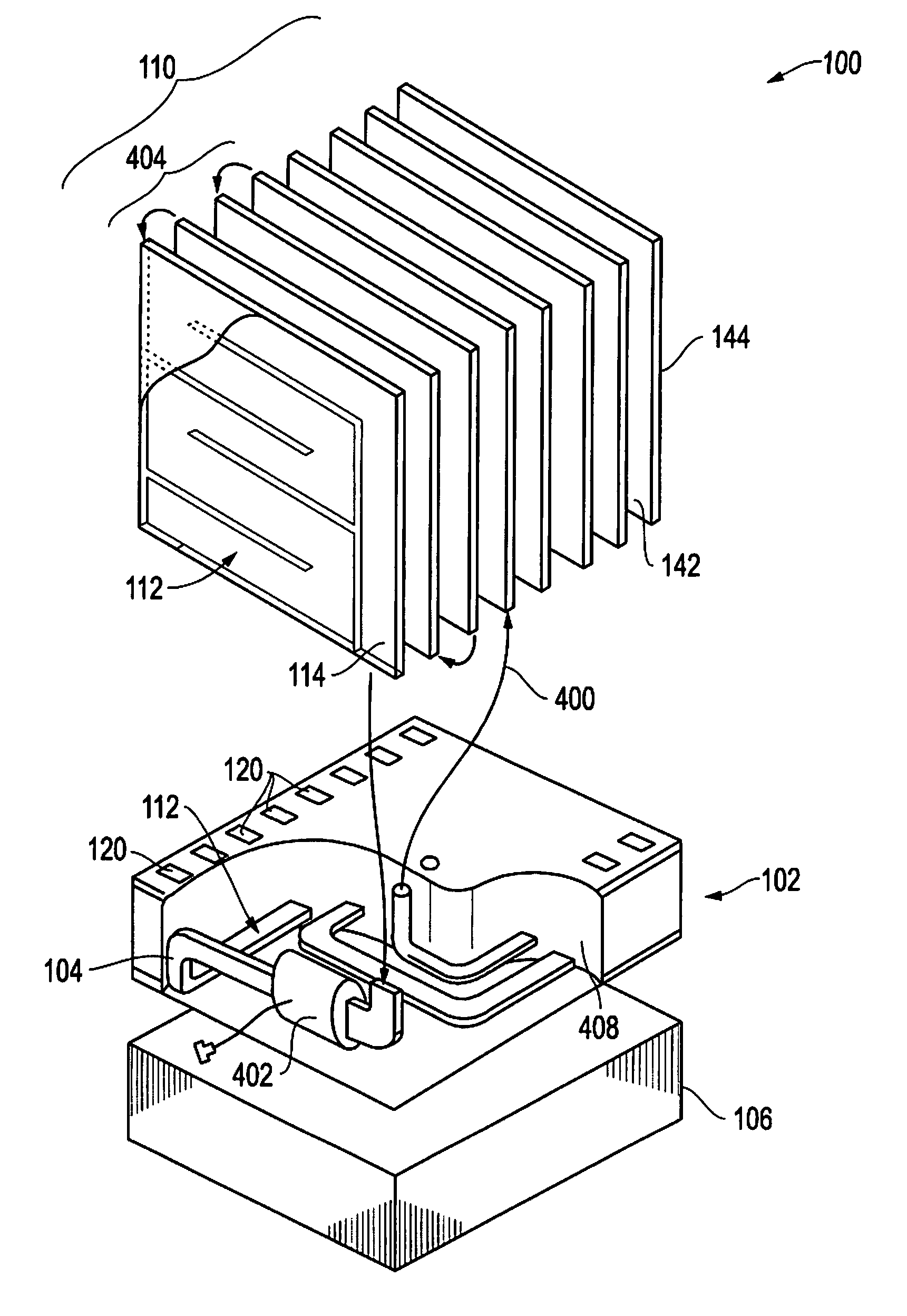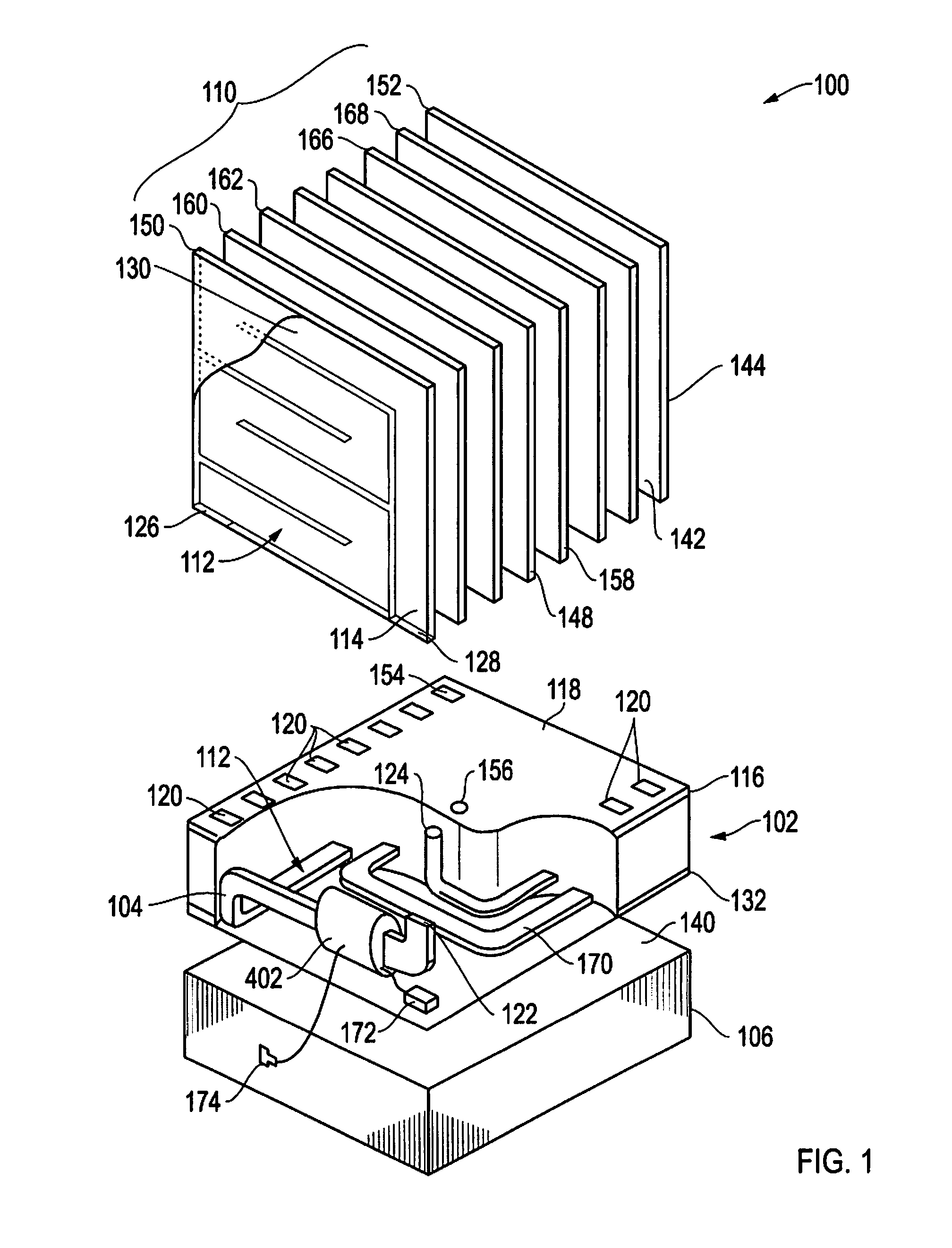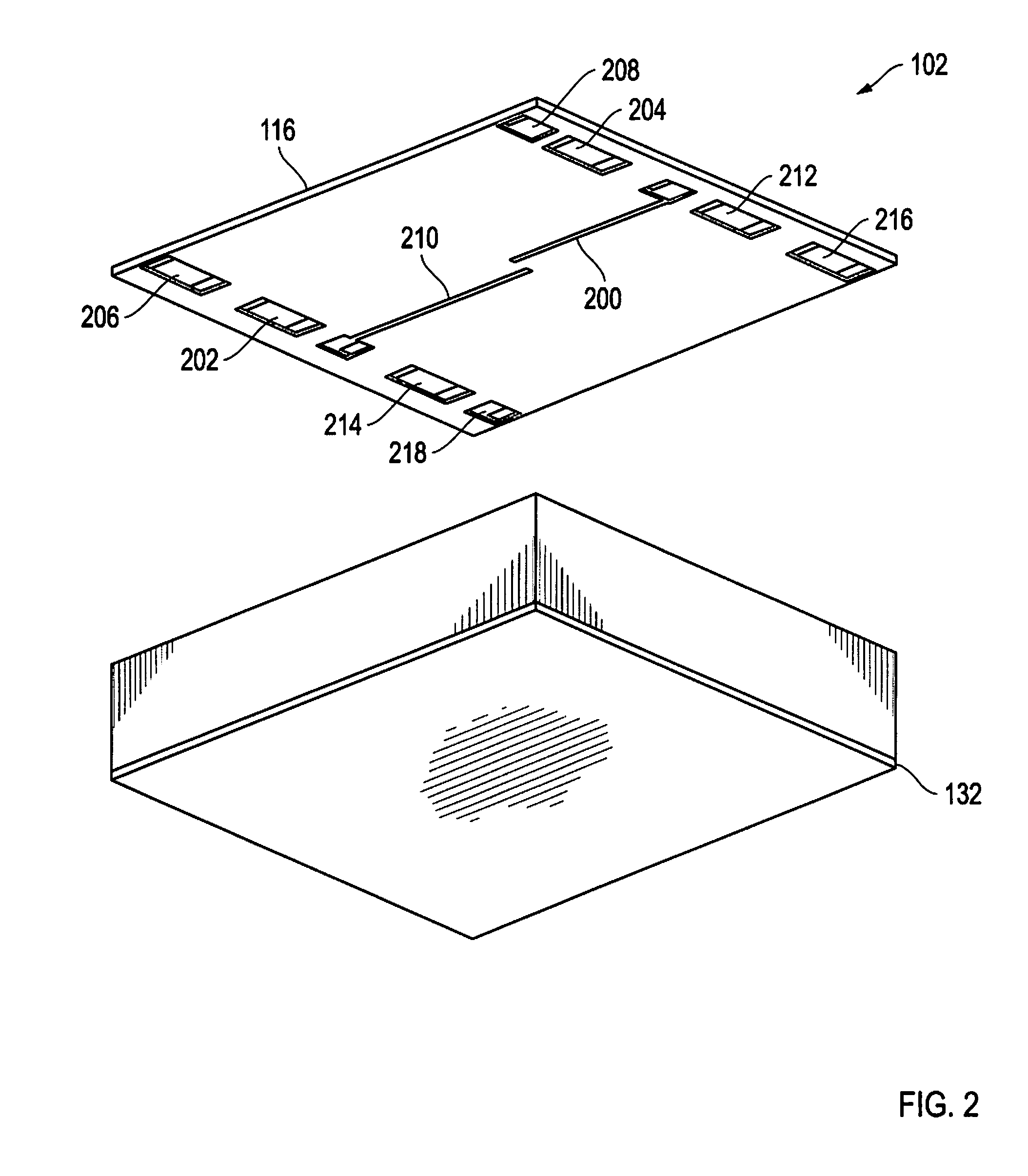Heat sinks for dissipating a thermal load
a technology of heat sinks and thermal loads, which is applied in the direction of cooling/ventilation/heating modifications, semiconductor/solid-state device details, and computer processors and memory modules. it can solve the problems of generating a considerable amount of heat, consuming significant amounts of power, and requiring a significant amount of power to opera
- Summary
- Abstract
- Description
- Claims
- Application Information
AI Technical Summary
Benefits of technology
Problems solved by technology
Method used
Image
Examples
Embodiment Construction
Detailed Description
[0022]Exemplary heat sinks for dissipating a thermal load, exemplary methods for parallel dissipation of a thermal load, and exemplary methods for convective dissipation of a thermal load according to embodiments of the present invention are described with reference to the accompanying drawings, beginning with FIG. 1. FIG. 1 sets forth an exploded perspective view of an exemplary heat sink (100) for dissipating a thermal load according to embodiments of the present invention. The thermal load is the thermal energy generated by a thermal source (106) such as, for example, a computer processor or memory chip. A measure of thermal load is typically expressed in units of Joules. The rate at which a thermal source produces a thermal load over time is typically expressed in units of Watts.
[0023]In the example of FIG. 1, the heat sink (100) is a thermal conductor configured to absorb and dissipate the thermal load from the thermal source (106) thermally connected with t...
PUM
 Login to View More
Login to View More Abstract
Description
Claims
Application Information
 Login to View More
Login to View More - R&D
- Intellectual Property
- Life Sciences
- Materials
- Tech Scout
- Unparalleled Data Quality
- Higher Quality Content
- 60% Fewer Hallucinations
Browse by: Latest US Patents, China's latest patents, Technical Efficacy Thesaurus, Application Domain, Technology Topic, Popular Technical Reports.
© 2025 PatSnap. All rights reserved.Legal|Privacy policy|Modern Slavery Act Transparency Statement|Sitemap|About US| Contact US: help@patsnap.com



